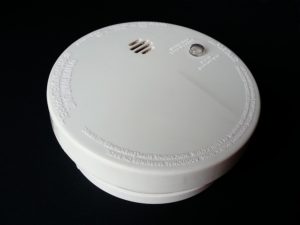 Today, our experts at Project X Restoration in Denver share with you where to place smoke alarms and extinguishers. By taking a few minutes to get familiar with these important tools and how to place them throughout your home, you’ll be much better prepared to prevent extensive damage to your home (or worse) if the unthinkable happens.
Today, our experts at Project X Restoration in Denver share with you where to place smoke alarms and extinguishers. By taking a few minutes to get familiar with these important tools and how to place them throughout your home, you’ll be much better prepared to prevent extensive damage to your home (or worse) if the unthinkable happens.
When determining where to place smoke alarms and extinguishers, it’s a good idea to know more about these tools. Let’s look at a few basics that can help save your home from fire and smoke damage.
Which Fire Extinguisher
Knowing which fire extinguisher works for the different kinds of fires will help you to choose the right extinguishers for your home and where to place them. The wrong type of extinguisher for the fire can have life-threatening results. There are different classifications of fire extinguishers. The three that are generally used for homes are:
- Class A: This extinguisher is used for ordinary combustible materials such as cardboard, paper, wood, and plastic.
- Class B: This extinguisher is designed for combustible or flammable liquids such as grease, oil, gasoline, and kerosene.
- Class C: This extinguisher is designed for electrical equipment such as wiring, outlets, appliances, and circuit breakers. Do not use water to attempt to extinguish a class C fire. You could be electrocuted.
Where?
Determine which class extinguisher you may need for an area should be based on the items in the surroundings. Make sure you have one in your garage or workshop and at least one on each floor of your home, near bedrooms is a good idea and in plain sight. If a fire breaks out in the middle of the night, having an extinguisher stored in the back of a closet does you no good. If you have a fireplace inside or firepit outside, make sure you have one nearby.
Having an extinguisher in the kitchen, such as a Class K that uses a unique process to fight grease fires, is also essential. Using water on this type of fire can splash the grease and cause the fire to spread very quickly.
Which Smoke Detector?
There are two general types of smoke detectors: ionization and photoelectric.
- Ionization: This smoke detector works well for flaming fires. An ionization smoke alarm has two-electrically charged plates and a bit of radioactive material in between the plates. The plates ionize the air and cause a flow of current between the plates. When smoke enters the chamber, the ion flow is disrupted, which reduces the current and activates the alarm.
- Photoelectric: This smoke detector is best for a fire that starts after a period of smoldering. Photoelectric alarms aim a light source into a chamber with a light sensor. When smoke enters the chamber, light is reflected into the light sensor and the alarm is triggered.
Though each kind of smoke detector works better for one kind of fire, both types of detectors will detect both kinds of fire.
Where?
Smoke alarms should be placed high on the wall since smoke rises. Install them on every floor and in every sleeping room. Additionally, you should have them spaced evenly throughout your home—hallways, kitchens, at the base of stairs leading to an upper level and living spaces should one if there are not any nearby. Keep them away from windows, doors, or any other drafty areas that could prevent them from working properly.
To prevent a home fire, smoke detectors should be inspected regularly and batteries should be changed once a year. Don’t wait to play the find the chirping smoke alarm game!
Knowing where to place smoke alarms and extinguishers can help you avoid a tragedy. We want you and your home to be protected in case of a fire. If experience a fire in your home, we here at Project X Restoration in Denver can assist with your cleanup efforts and take good care of you and your home.